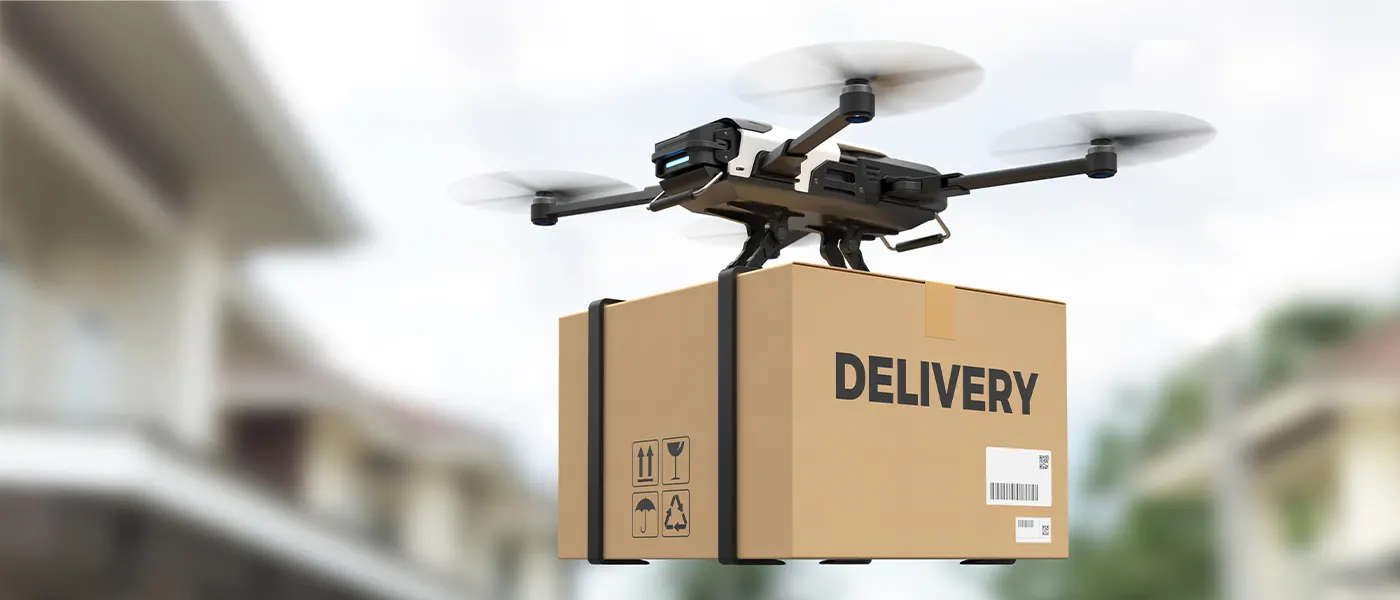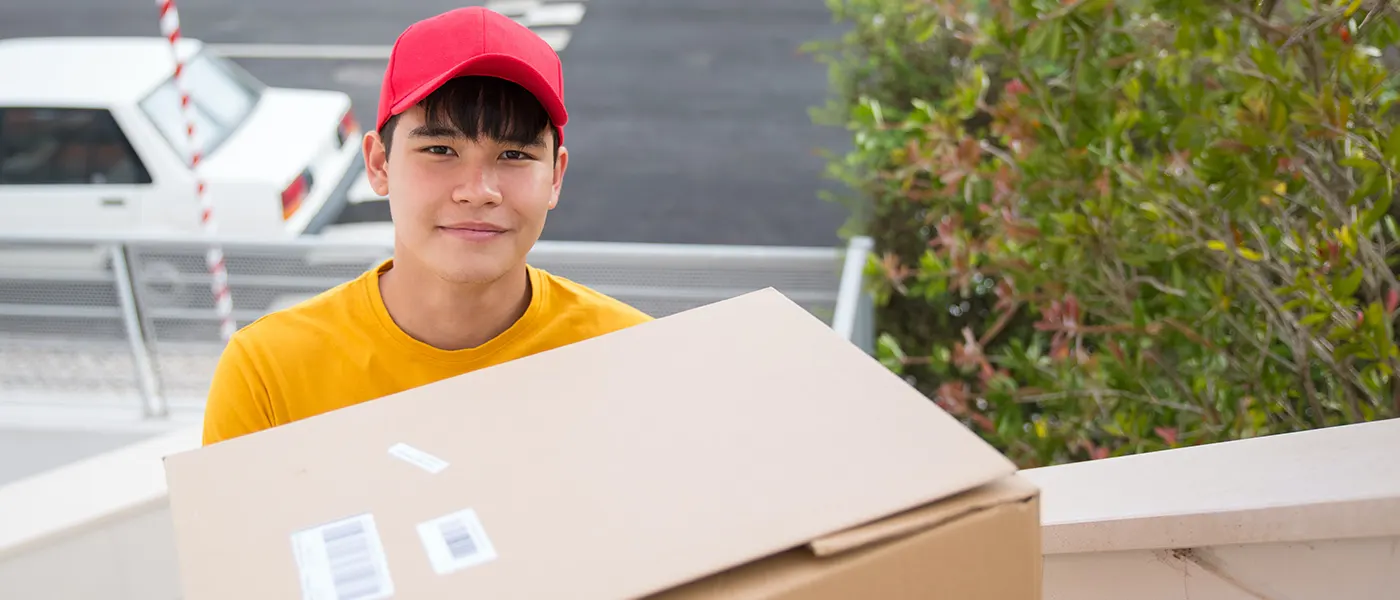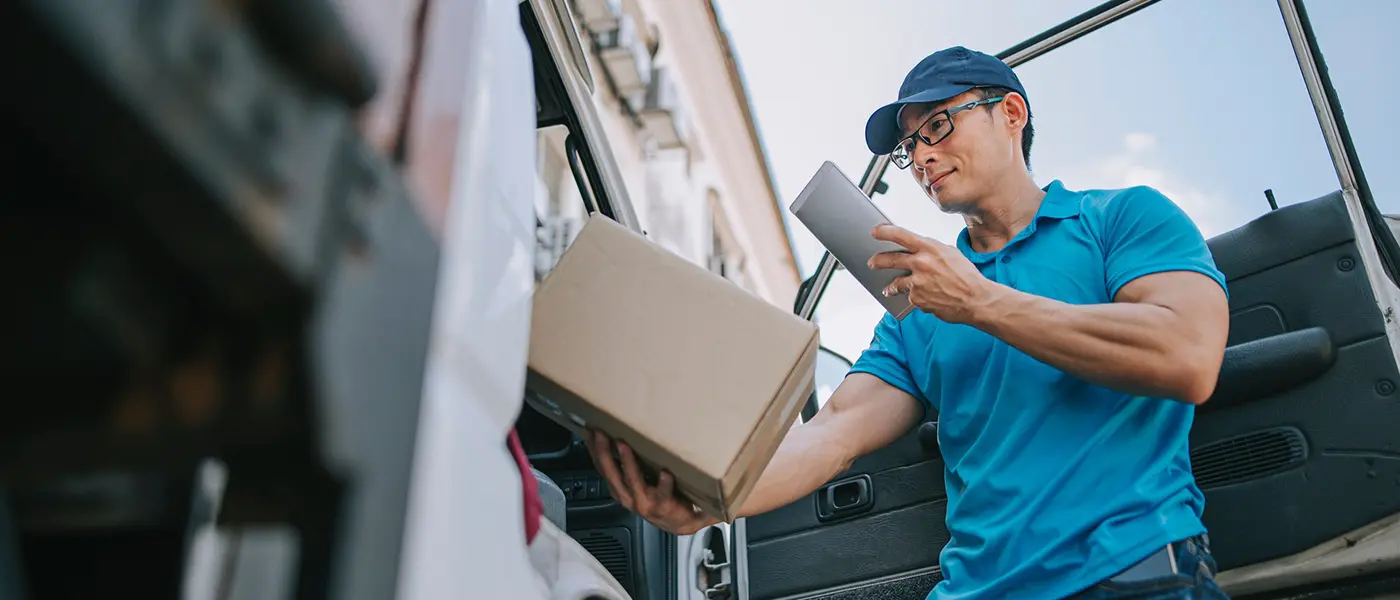What is Last-mile Carrier Delivery?
Last-mile delivery refers to deliveries that pertain to the final destination of any shipment. It is the final part of the entire delivery process and involves the transportation of cargo to the final destination. Last-mile delivery can play a crucial role in the overall process of delivery.
One of the objectives of last-mile delivery is to ship to a client as quickly as possible. It helps the carrier make an efficient choice when handling clients and businesses. On the other hand, a client is open to trust and may consider using the carrier again and even recommending it to other potential clients.
Importance of Last-mile Delivery
Last-mile logistics depend on carriers that ensure that the shipment is delivered through a fast and flexible system. Some factors contributing to the importance of last-mile delivery are listed here.
- Speedy delivery – This tops the list. Ensuring quick delivery is one of the prime reasons behind last-mile delivery.
- Real-time tracking – Tracking orders can make customers trust carriers to the degree that they may be willing to reuse services from the same carrier.
- Robust security – Additional protection can help the shipment avoid damage when delivering loads. At the same time, it upholds confidentiality.
- Reliable insurance – If a shipment is mishandled or goes missing, you can avoid losing customer reputation by allowing for low insurance charges. This way, you will already have guaranteed trust for your client.
- Delivery convenience – Modern-day delivery carriers offer choices to have a client’s shipment picked from their preferred location.
- Additional features – Adding specifications to the delivery can accentuate how you handle the business.
Challenges of Last-mile Delivery
The main challenges of last-mile delivery include high costs obtained at the final destination. Apart from that, other factors add to the trickiness of the situation. Let’s discuss these aspects in this section.
- Overbearing costs – Costs can be a massive obstacle to last-mile delivery. Since you can always expect price hikes regarding returns, exchanges, and cancellations, there is always a chance that last-mile delivery can be the most pocket-tiring part of the shipment delivery system. For the better part of a delivery carrier, provisions dictating better quotes, extra stoppages, driver’s compensation, failed deliveries, and fleet management techniques are considered.
- Outdated system – The lack of last-mile delivery software makes tracking difficult. It can result in a roadblock in delivery operations. Besides, in the age of modern technology, it is best to develop software that primarily caters to last-mile carriers.
- Failed deliveries – Failed deliveries occur when a delivery agent fails to deliver a shipment on the promised date. It creates an obstacle in a system that prioritizes predetermined slots. In turn, this creates additional operational costs, thereby degrading profits.
- Tracking system – Offering customers the advantage of tracking codes is no surprise in today’s age. Real-time tracking can prove beneficial for carriers and businesses who can track the shipment in their own time. Real-time tracking requires location updates at every designated location.
Last Mile Delivery Costs
Last mile carriers cover delivery costs concerning these six factors:
- Labor cost
- Fuel cost
- Reverse logistics cost
- Shipment delivery equipment cost
- Delivery management software cost
- Disparate costs
An exciting thing about last-mile delivery is that it takes up exactly 41% of the total shipment costs. For instance, if your total cost of shipping amounts to USD 500, you’ll be charged over a third of the cost, which can amount to USD 205. The last mile takes up the most costs assigned to shipment delivery.
A smaller package’s average last-mile cost can touch USD 10 for high-density deliveries. For heavier packages tagged low-density, the price can touch USD 50. Overall, the lack of optimization, a massive barrier in terms of last-mile carriers, can add to the rising costs of last-mile delivery.
What is a Last Mile Carrier?
What does last-mile carrier mean? Last-mile carriers are the name given to logistics companies that assist in transporting shipments from one hub to another. The hub in consideration is the nearest location to the final destination of the shipment. Doing this puts cost and time on the radar. Usually, a last-mile carrier will help you with relatively less time and low prices for loads of your choice.
Last Mile Carrier Tracking
The last-mile carrier tracking is a system that invigilates the whole tracking process. Many software is available out there for the sole purpose of last-mile tracking. A regular last-mile carrier tracking link should involve:
- A tracking code
- Estimated time for arrival
- The current location of the shipment
- The name and number of the delivery agent
Solutions to Improve Last Mile Challenges
Last mile deliveries can face a range of problems. When not addressed, it adds to the obstacles in the last-mile delivery. Let’s look at some solutions that can prove beneficial in improving last-mile challenges.
- Implement transparent policies – An advanced solution to improving last-mile challenges is to address the tracking policy. It can help rid problems contributing to delivery failure. Missed schedules, route optimization, proof of delivery, and contactless payments can all be taken care of while implementing a real-time tracking policy.
- Optimize routes – A software that mainly caters to how passages show up while delivering a shipment can prove a significant step. It is primarily because external navigation apps don’t offer specifications for delivery vehicles.
- Use communication to outgrow business – Communication with customers is vital in retaining them. It ensures client availability, among other reasons. You can contact customers via notifications or messages if you need to inform them about their shipping process. Besides, if a new change has occurred regarding the shipment, it will be best to communicate it to the client.
- Improve proximity – How can you effectively save time and deliver at a faster pace? This is when proximity comes into the picture. By ensuring that the warehouse and customer’s location are nearer, you can implement speedier delivery, thereby saving extra costs of traveling that eventually show up in the carrier’s fees.
Trends That Shape Last Mile
Some of the trends that shape every year depend on commerce’s nature. These trends can be elaborated on using a few pointers.
- Conditioning of consumer behavior
According to Mckinsey’s researchers, 75% of online consumers indulged in new shipping behaviors, including purchasing from new channels. They also ordered from curbside pickups.
Buying online has become a norm for many. It is the reason e-commerce platforms are seeing a rise in online shoppers. Another factor that drives consumers is speedy delivery which includes last-mile extension.
- The return of physical stores
When the pandemic started settling, many establishments had already lifted their lease on commercial property and shifted their business into the virtual world. This move continued for two years until 2022 when companies started expanding and returned to the traditional form of the market.
- Q-commerce and grocery stores
Quick commerce is a way of handling flash deliveries, strictly what grocery stores have adopted since the pandemic’s beginning.
- Takeout is the new norm for restaurants
E-commerce has paved the way for instant and scheduled grocery delivery without complicating it. For example, with the rise of the pandemic, restaurants saw a steep decline in their in-restaurant dining clientele. It convinced restaurants to try out newer approaches, making it more suitable for curbside pickup arrangements.
It is an effective way to acquire forgotten groceries, initiating last-minute grocery shopping, which is more traditional. With slot options offered to the customers, more expectations are met, and it becomes a time-friendly and highly acceptable affair.
Moreover, introducing restricting outdoor seating arrangements also made it to the list. Nonetheless, last-mile delivery has a role to play in this setting. When restaurants choose last-mile delivery solutions, carriers charging lesser delivery costs make it their priority list. Thus, it is also a challenge for last-mile carriers to abide by their client’s demands and requests.
- The rise of sustainable shopping
Over the years, consumers have placed more value on a brand’s values and transparency than on its product, promotion, or price. It has made it easier to identify the drive behind shopping sprees and experiences in general.
Now, how does last-mile delivery get affected at this point? In the last stage, a carrier can inevitably choose to opt for electric vehicles and carbon-pricing techniques, making a conscious decision to abide by sustainable practices. In turn, this can provide excellent customer feedback.
Keeping in mind the various forms in which last-mile delivery takes shape, let us look at some of the actual figures that visualize the concept of last-mile carrier delivery.
- Customers were willing to pay up to 5 USD for shipping.
- The most crucial delivery initiative in terms of last-mile delivery was to reduce costs.
- The average cost incurred per failed delivery in 2020 was 17.2 USD.
- The market for last-mile delivery is expected to surpass 51 billion USD by 2028.
Which Last-mile Carrier Model is Ideal for Your Business?
Choosing the right last-mile carrier can make all the difference in your business. Ideally, selecting a carrier that delivers what it promises would be best. Below are some instances you will be facing when handling last-mile carriers.
- Choosing a single carrier
Businesses usually opt for a single-fleet carrier option keeping in mind the relatively easy tracking system. You must also consider surges in shipment deliveries and choose a suitable career option. If the volume of shipments surges, you will face problems in business.
- Choosing a 3PL
While working with a third-party logistics provider, you must ensure they have prior experience handling carrier services. You can also work with 3PL as a second option while still going for single-fleet carrier service. Additionally, you can enable services from multiple 3PLs to ensure that the workload is distributed evenly. Moreover, with a single 3PL, you can expect delivery per a retailer’s specific requests.
- Choosing multiple fleets using software
A fleet management system ensures safe and smooth dispatch and simultaneously takes care of delivery costs. It makes it essential to find a valuable platform that caters to every need of your business.
Crowdsourced delivery is a relatively newer concept that has been doing the rounds lately. Depending on your business model, you can use it as your primary or secondary carrier option. This system usually works on a pay-as-you-go idea.
How to Effectively Select the Last-mile Carrier
Let’s look at some critical considerations for finding the last-mile carrier that makes your job easier. At the end of the day, clients look for reliable services that offer the maximum benefits.
- Last-mile tracking for carriers
Choosing a shipping carrier that utilizes real time-tracking and visibility can work wonders for any business. Therefore, make it a conscious choice to choose a carrier that actively uses last-mile tracking. It can be either shipment tracking or last-mile carrier tracking.
- Service levels
The service you seek from a carrier should depend on shipment handling. It can work on different levels depending on less or more priority. To find out which level of service the carrier company offers and if they offer options for configuring, refer to the catalog of last-mile carriers.
- Last-mile delivery models
As the last-mile carrier, you can enable several delivery models like the ship from a store vs. ship from a hub, same-day or on-demand delivery, and batching vs. point-to-point delivery.
- Delivery and integration services
As a logistics provider, you want to enable reasonable integrations for your shipment. When handling a premium or expedited delivery, you’re looking for carriers that can deliver the cargo on time.
- Shipping charges
It is vital to compare overall shipping costs and compare it to other shipping companies. You can always consider shipping at lower prices. But try not to make this your immediate priority since factors such as next-day shipping and one-day shipping can always make the fare go up.
- Driver Capacity
If you’re looking at a high volume of shipments to be covered by last-mile carriers, ensure a good number of drivers behind the wheel.
- Last-mile technology
Route optimization is one of the many ways to look for innovation. Another way to do this is to opt for machine learning capabilities that bring an utter change to how logistics carriers work.
- Customer feedback
An excellent way to count experiences is to pave the way for customer feedback. Furthermore, you can create a unique experience for everyone by employing exceptional services.
Examples of Last-mile Delivery
Real-life examples bring out the true essence of last-mile deliveries. How long does the last-mile carrier take? It depends on different carriers and the policies laid out by their business. Hence, listing them would be the right thing to do. Remember that these are some of the top-carrier providers regarding last-mile delivery.
DHL – Dalsey, Hillblom, and Lynn is a German company founded in 1969 catering to the US. Gradually, it expanded to other countries. Last-mile delivery is an intrinsic part of which DHL holds various studies from time to time.
LBC – LBC Express is based in the Philippines and caters to APAC countries. Founded in 1945, it offers an essential quality in the form of last-mile delivery.
J&T – J&T Express is a logistics company based out of China. It offers express delivery and last-mile services in Southeast Asia.
Conclusion
Choosing carriers for your e-commerce can be a challenging option. One way to alleviate the tricky nature of last-mile carrier delivery is to look for experienced carriers that can make the journey much more convenient. This way, you can ensure that your clients look up to you and that your business is up and running. When choosing an e-commerce carrier, make it the rule of thumb to choose an eco-friendly and cost-inclusive shipping method. It not only adds to the business’s reputation but also to the top features one can look out for in terms of last-mile carriers.
FAQs
How do carriers solve the last-mile delivery problem?
Carriers usually utilize five strategic pointers to diminish the gap between last-mile delivery logistics and the customer.
- Optimizing delivery channels
- Cutting down on labor costs via auto-dispatching
- Improving warehouse and customer propinquity
- Offering 24×7 customer support and communication
- Contributing to real-time delivery tracking of the shipment/s
How does last-mile delivery help with 2-day shipping?
With shipments that demand a 2-day delivery, last-mile carriers usually prioritize putting it under ‘expedited delivery’. This kind of delivery can cost more compared to essential services.
What is the ‘last-mile challenge’?
The last-mile challenge comes in many forms, one of which is the high shipping expense. The last-mile challenge is designed to cater to well-informed carriers who opt for faster and less time-consuming deliveries once the shipment has reached its final warehouse. Other last-mile challenges include low-ranking granular tracking, lack of transparency, and transit unpredictability.
How can I improve my last-mile delivery?
Centralizing can deal with delays, safety concerns, and cost overruns. Thus, centralizing the logistics data into an ERP system is the best way to go about when it comes to improving last-mile delivery.
Why is the last mile so expensive?
Last-mile carriers must go through many hassles to ensure that the content is delivered on time. Because the consignment faces issues like a lack of route optimizations and technical accounting at the last-minute location, many deliveries are tagged ‘failed’ and encounter errors, which leads to added costs. Other viable reasons are the last-minute cancellations, replacements, returns, and delivery attempt failures that increase costs at the last-mile delivery.
What does the final mile mean in logistics?
The final mile refers to the final leg of any journey. It is the final location in which the destination of the shipment rests.





